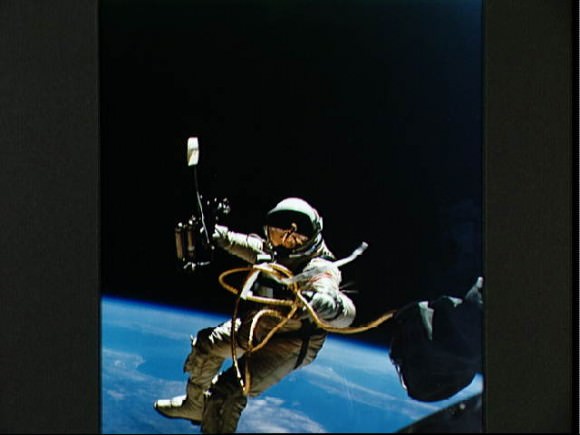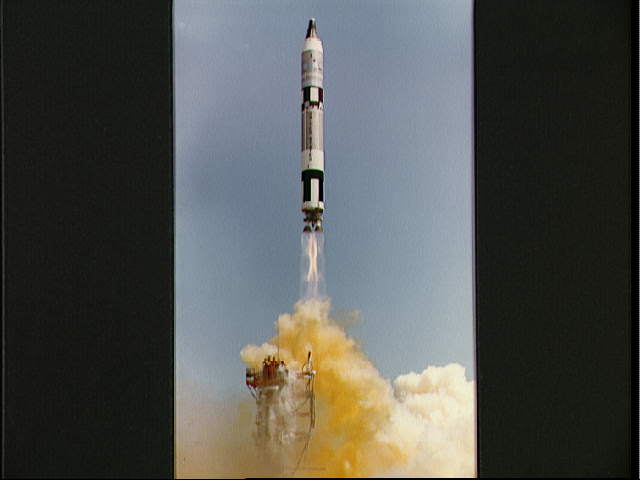[/caption]
The second mission of Project Gemini was Gemini IV. The mission launched on June 3, 1965 at 10:15 am local time, from Cape Canaveral in Florida. The two astronauts on board were James A. McDivit, Commander and Edward H. White II, Pilot.
A Titan rocket boosted the Gemini capsule to an altitude of 296.1 km. McDivit and White made 62 orbits, and the duration of their flight was 4 Days, 1 hour, 56 min, 12 seconds. The Gemini spacecraft weighed 3574kg.

The highlight of the mission was an EVA (extra vehicular activity) by Ed White, where he climbed out of the spacecraft and while tethered, floated for 23 minutes, not nearly long enough for White. He later said the spacewalk was the most comfortable part of the mission, and said the order to end it was the “saddest moment” of his life.
White was attached to the capsule by a 25 foot umbilical cord. He initially used a gas powered gun held in his hand to maneuver. After the first three minutes the fuel ran out and White moved around by twisting his body and pulling on the cord.
The other main objectives of the mission were to evaluate the effects of prolonged space flight which included checking out the performance of a spacecraft during a four-day mission, and evaluating the procedures for crew rest and work cycles, eating schedules, and realtime flight planning.
Secondary objectives included attempting to stationkeep and rendezvous with second stage of Gemini Launch Vehicle and perform 11 experiments.
All the primary objectives were achieved except one: computer controlled reentry was not able to be used because of inadvertent alteration of computer memory. All secondary objectives were met except that due to excess fuel consumption, all the stationkeeping and rendezvous maneuvers were not able to be done.
Gemini IV splashed down in the Atlantic Ocean on June 7, 1965 27 degrees 44 minutes North and 74 degrees 11minutes West, about 81.4km from attempted landing zone.
More images from Gemini IV

